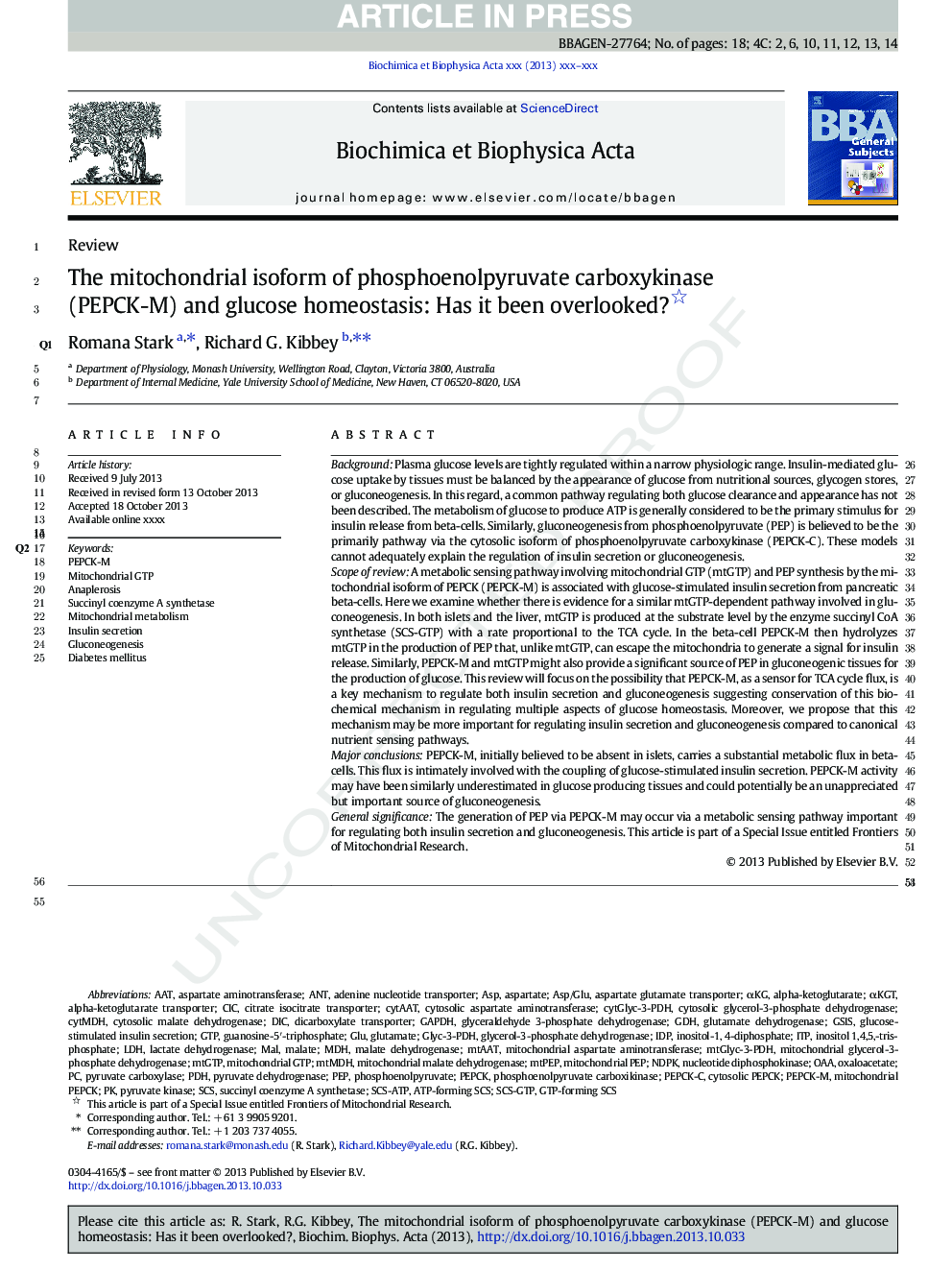| Article ID | Journal | Published Year | Pages | File Type |
|---|---|---|---|---|
| 10800197 | Biochimica et Biophysica Acta (BBA) - General Subjects | 2014 | 18 Pages |
Abstract
The mitochondrial isoform of phosphoenolpyruvate carboxylase (PEPCK-M) plays an important role in glucose homeostasis. As PEPCK-M is constitutively expressed and dependent upon mitochondrial GTP (mtGTP), it is well disposed to link the mitochondrial energy sensing signal “mtGTP” with insulin secretion in the pancreas (left) or glucose production (right) in the liver. Glucose that enters the β-cells of the pancreas (left) is degraded to phosphoenolpyruvate (PEP) during glycolysis and metabolized to pyruvate. Pyruvate that enters the TCA cycle by pyruvate dehydrogenase (PDH) will generate GTP via direct synthesis by SCS-GTP. Anaplerotic pyruvate entry by pyruvate carboxylase (PC) will generate oxaloacetate. PEPCK-M will then consume oxaloacetate and GTP to produce PEP. In contrast to the pancreas, the liver has two PEPCK isoforms: cytosolic (PEPCK-C) and mitochondrial (PEPCK-M) and both produce PEP when there is adequate TCA flux (right). PEP can then be used for gluconeogenesis. The mtGTP/PEPCK-M pathway is a hormone-independent gluconeogenic pathway. GDH glutamate dehydrogenase.182
Keywords
GTPPEPCK-MCytosolic malate dehydrogenasePEPCK-COxaloacetateαKGOAAGSISNDPKAnaplerosisPDHIDPPEPCKAATMDHPEPCICDICASPGAPDHMALANTSCsGDHguanosine-5′-triphosphateaspartatecytosolic aspartate aminotransferasemitochondrial aspartate aminotransferaseAspartate aminotransferasealpha-ketoglutarateInsulin secretionGlucose-stimulated insulin secretionadenine nucleotide transporterphosphoenolpyruvatephosphoenolpyruvate carboxykinaselactate dehydrogenaseLDHmalatemalate dehydrogenaseMitochondrial malate dehydrogenaseITPpyruvate dehydrogenasepyruvate carboxylasepyruvate kinaseGluglutamateglutamate dehydrogenaseGluconeogenesisglycerol-3-phosphate dehydrogenasemitochondrial glycerol-3-phosphate dehydrogenaseglyceraldehyde 3-phosphate dehydrogenase
Related Topics
Life Sciences
Biochemistry, Genetics and Molecular Biology
Biochemistry
Authors
Romana Stark, Richard G. Kibbey,
